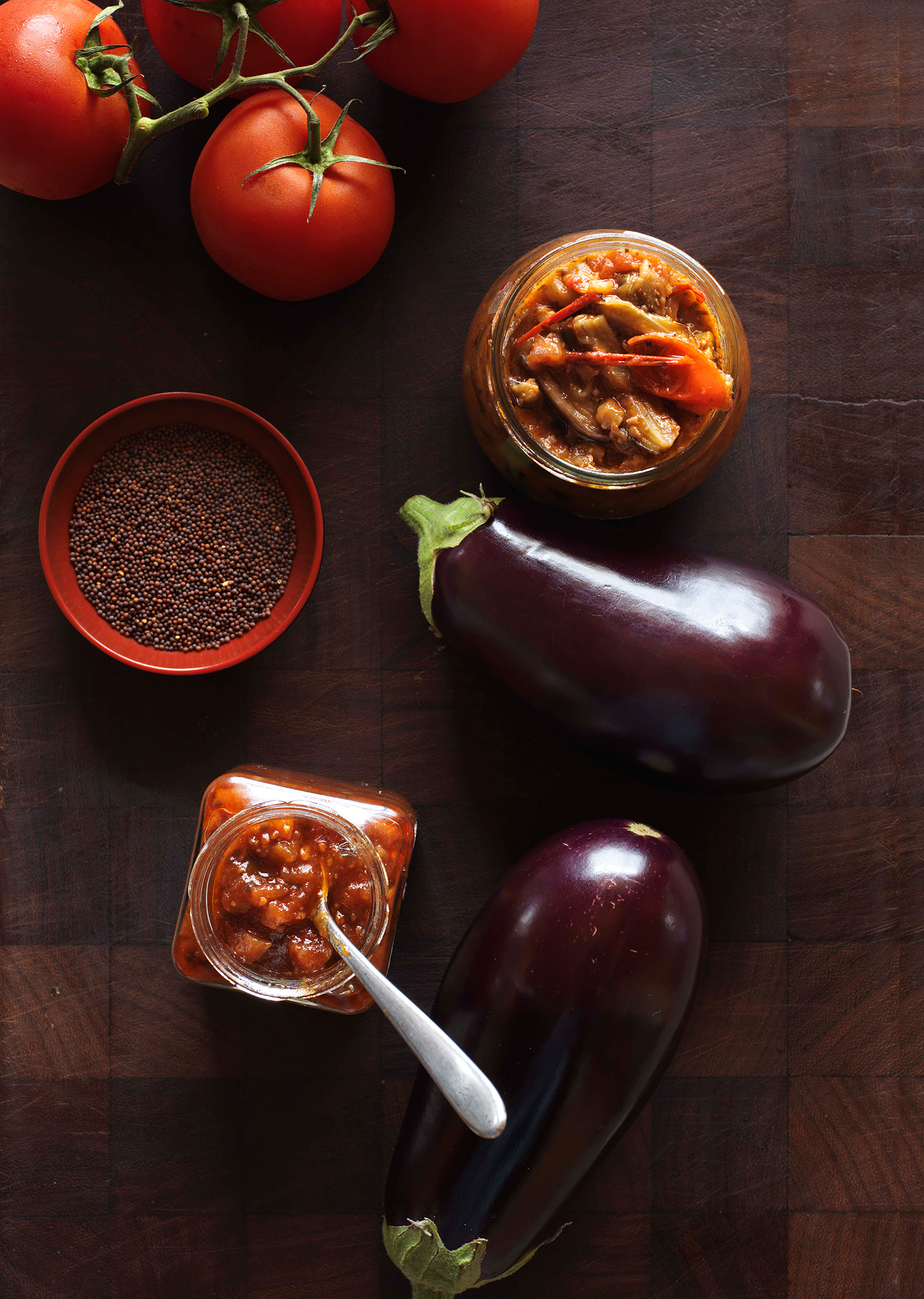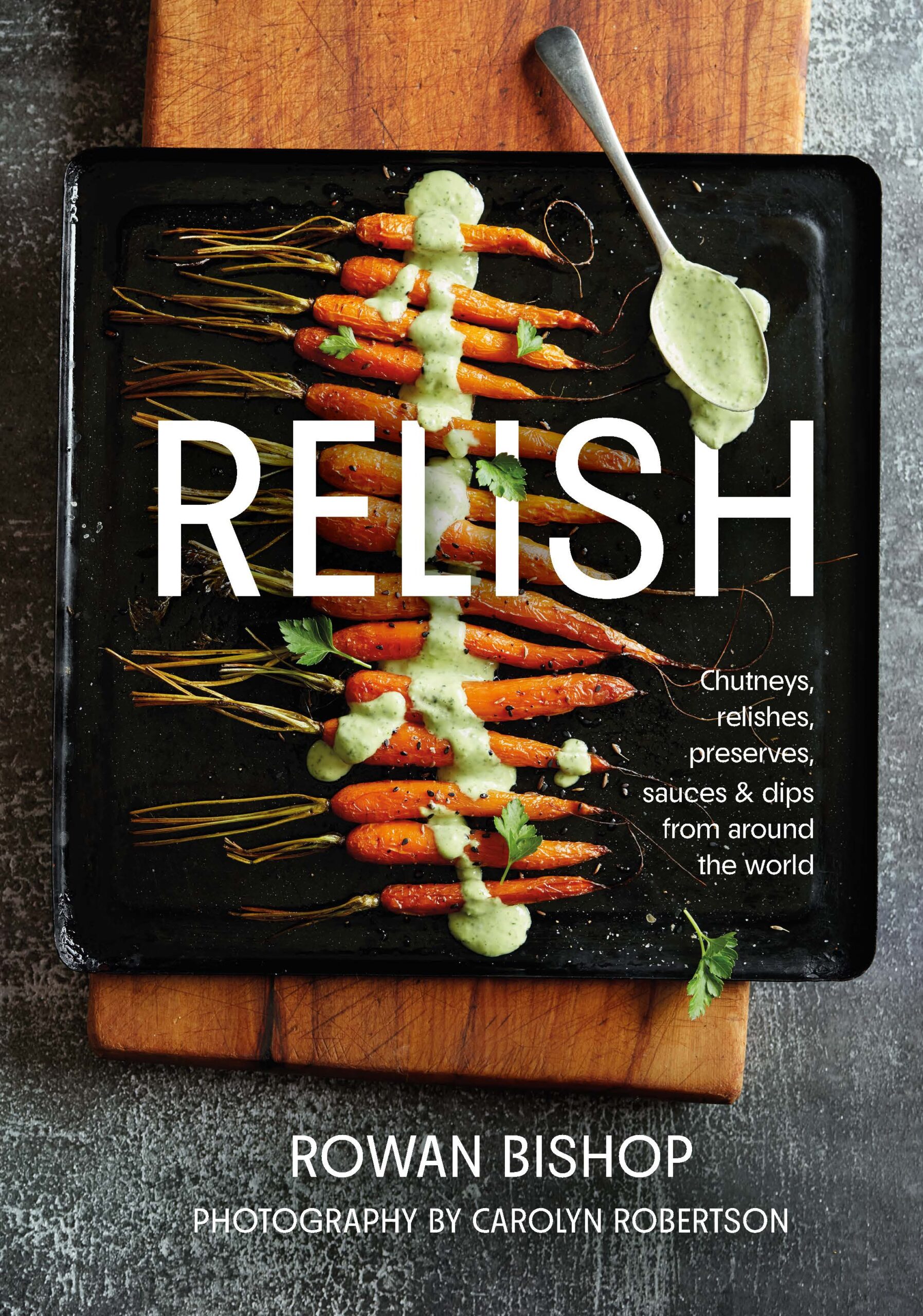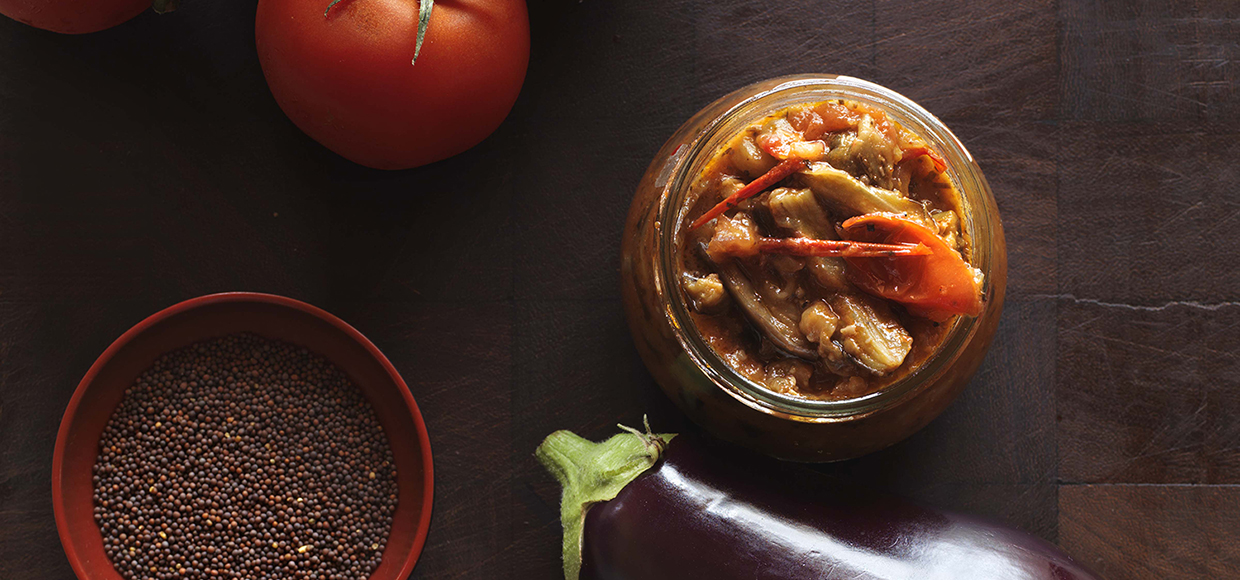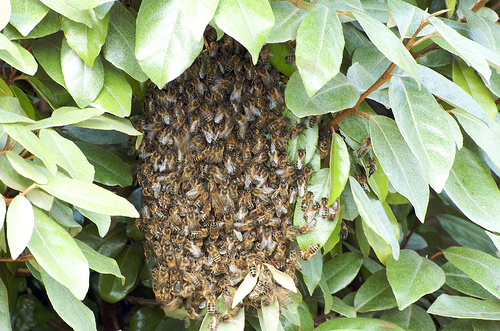For those who like Indian flavours, make room in your pantry for this pickle.
It teams brilliantly with curries and lentils or it can be transformed into a dip with sour cream or yoghurt, sweet chilli sauce and a squeeze of lime. Or you can simply serve it with crackers or in a wrap as a flavour boost.
Makes 5-6 x 400g jars
Ingredients
1kg eggplant
oil, to toss
2 tsp salt (first measure)
⅓ cup oil
1 tbsp mustard seeds
⅓ cup peeled and minced ginger
¼ cup finely chopped garlic
1½ tbsp toasted cumin seeds, crushed
1 tbsp fenugreek seeds, crushed
2½–3 tsp chilli powder or to taste
2 tsp salt (second measure)
freshly ground black pepper to taste
2 medium onions, peeled and thinly sliced
1kg ripe tomatoes, cored if necessary and diced or equivalent canned weight, with juice
2 tbsp tamarind concentrate*
1 cup sugar
1 ¼ cups cider vinegar
1 tbsp dried basil or 3 tbsp fresh, chopped
2½ tbsp tomato paste
Method
Preheat oven to 190°C.
Slice the eggplant into batons, 1cm x 5cm.
Transfer to two or three large oven trays in single layers. Toss eggplant to coat lightly with oil and the first measure of salt.
Roast for 25–30 minutes, until golden and cooked through. Set aside.
Heat the ⅓ cup of oil in a large, heavy-based saucepan over a medium-high heat. Sauté the mustard seeds in the oil until they start popping, then remove from the heat and stir in the ginger, garlic, cumin, fenugreek, chilli, salt and pepper. Sauté until fragrant, transferring to a low heat.
Stir in the onion and sauté until softened. Add a little more oil if necessary.
Stir in the prepared tomatoes, tamarind, sugar, vinegar, basil and tomato paste.
Bring to simmer point and cook for 10 minutes before adding the roasted eggplant batons.
Cook for another 20 minutes, stirring gently so as not to break up the eggplant, or until the mixture reaches the desired consistency.
Spoon into hot, sterilised jars and seal with hot, sterilised screw-on metal lids.
It’s especially important to refrigerate this pickle after opening as the amounts of sugar and vinegar are not high.
*TAMARIND: Commonly used throughout Africa, Asia, Latin America and the Pacific, tamarind has a tart fruit flavour and is often used instead of lemon as a souring agent. The best way to create tamarind concentrate this from a block of pulp. To make tamarind concentrate from block pulp, take 125g from a block of tamarind pulp, available from any Asian food store. Break it up and soak in one cup of hot water for 15 minutes, breaking it up further as it soaks. Push it through a sieve and discard leftover fibre and seeds. Measure the amount required and freeze the excess for future use.

Recipe extracted with permission from Relish: Chutneys, relishes, preserves, sauces & dips from around the world by Rowan Bishop, photography by Carolyn Robertson, published by Bateman Books, RRP $45, available now.








